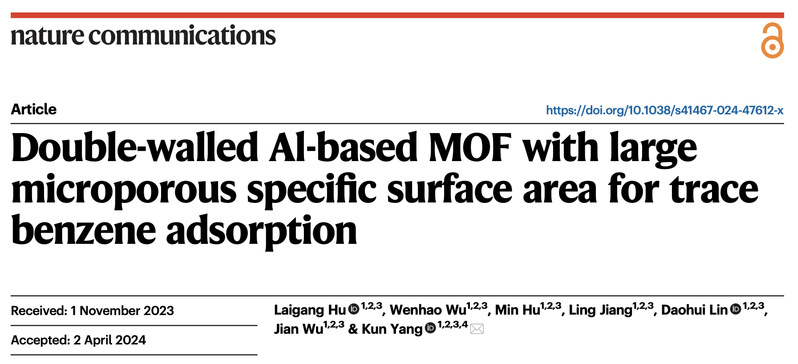Prof. Yang Kun's team published a paper in Nature Communications on the preparation of novel Double-walled Al-based MOF with large microporous specific surface area for trace benzene adsorption
2024-04-16

First author: Hu Laigang
Corresponding auther: Prof. Yang Kun
Link: https://www.nature.com/articles/s41467-024-47612-x
Abstruct:
Double-walled metal-organic frameworks (MOFs), synthesized using Zn and Co, are potential porous materials for trace benzene adsorption. Aluminum iswith low-toxicity and abundance in nature, in comparison with Zn and Co. Therefore, a double-walled Al-based MOF, named as ZJU-520(Al), with large microporous specific surface area of 2235m2 g–1, pore size distribution in the range of 9.26–12.99 Å and excellent chemical stability, was synthesized. ZJU-520(Al) is consisted by helical chain of AlO6 clusters and 4,6-Di(4-carboxyphenyl) pyrimidine ligands. Trace benzene adsorption of ZJU-520(Al) is up to 5.98 mmol g–1 at 298 K and P/P0 = 0.01. Adsorbed benzene molecules are trapped on two types of sites.One (site I) is near the AlO6 clusters, another (site II) is near the N atom of ligands, using Grand Canonical Monte Carlo simulations. ZJU-520(Al) can effectively separate trace benzene from mixed vapor flow of benzene and cyclohexane, due to the adsorption affinity of benzene higher than that of cyclohexane. Therefore, ZJU-520(Al) is a potential adsorbent for trace benzene adsorption and benzene/cyclohexane separation.

Crystal structure of ZJU-520(Al)
